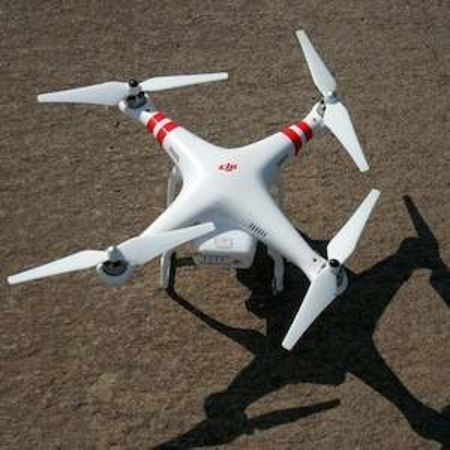1. Search for Out of Hospital Cardiac Arrest Drowning Victims
Using a drone to locate submerged drowning victims could save time by transmitting aerial video of the search area to a tablet. A simulated study from Scandinavia (Claesson et al. 2017), of 20 searches for a manikin using a drone compared to a search party of lifesavers alone, found that the median time saved by using a drone was 3.38 minutes. This could mean an earlier start to cardiopulmonary resuscitation (CPR) in victims. The researchers carried out their simulation in good conditions, in seas without swimmers present, and suggest further research is needed. The study is in press in Resuscitation, the journal of the European Resuscitation Council.Drones have also been developed that can drop flotation devices to struggling swimmers before a rescuer reaches them.
2. Deliver Blood Products
A study from the Department of Pathology at Johns Hopkins Hospital, Baltimore, USA, tested using a drone to transport blood products (Amukele et al. 2016), finding that there was no adverse impact following transportation.Drones are already being used commercially in Rwanda to deliver blood products to rural and remote hospitals, as reported by the BBC.
3. Deliver AEDs
A study of delivery of automatic external defibrillators (AEDs) by drone found that delivery time was faster than emergency medical services in 93% of rural cases (tested in real life locations), and 32% of metropolitan cases (tested in a simulation model) (Claessen et al. 2016).While drones might seems like good news, there are some drawbacks. There is the potential for collisions with helicopter emergency medical services (HEMS) and privacy concerns, as news organisations launch news-gathering drones (Clark 2016).
Image credit: Pixabay
References:
Amukele T, Ness PM, Tobian AA, Boyd J, Street J (2016) Drone transportation of blood products. Transfusion, Nov 11. doi: 10.1111/trf.13900. [Epub ahead of print]
Claesson A, Svensson L, Nordberg P, Ringh M, Rosenqvist M, Djarv T, Samuelsson J, Hernborg O, Dahlbom P, Jansson A, Hollenberg J (2017) Drones may be used to save lives in out of hospital cardiac arrest due to drowning. Resuscitation, Jan 18. pii: S0300-9572(17)30013-8. doi: 10.1016/j.resuscitation.2017.01.003. [Epub ahead of print]
Claesson A, Fredman D, Svensson L, Ringh M, Hollenberg J, Nordberg P, Rosenqvist M, Djarv T, Österberg S, Lennartsson J, Ban Y (2016) Unmanned aerial vehicles (drones) in out-of-hospital-cardiac-arrest. Scand J Trauma Resusc Emerg Med, 24(1): 124.
Clark JR (2016) Drones rule! Air Med J, 35(6): 336-8. doi: 10.1016/j.amj.2016.10.003.
Claesson A, Svensson L, Nordberg P, Ringh M, Rosenqvist M, Djarv T, Samuelsson J, Hernborg O, Dahlbom P, Jansson A, Hollenberg J (2017) Drones may be used to save lives in out of hospital cardiac arrest due to drowning. Resuscitation, Jan 18. pii: S0300-9572(17)30013-8. doi: 10.1016/j.resuscitation.2017.01.003. [Epub ahead of print]
Claesson A, Fredman D, Svensson L, Ringh M, Hollenberg J, Nordberg P, Rosenqvist M, Djarv T, Österberg S, Lennartsson J, Ban Y (2016) Unmanned aerial vehicles (drones) in out-of-hospital-cardiac-arrest. Scand J Trauma Resusc Emerg Med, 24(1): 124.
Clark JR (2016) Drones rule! Air Med J, 35(6): 336-8. doi: 10.1016/j.amj.2016.10.003.
Latest Articles
emergency medicine, cardiac arrest, drones
Using a drone to locate submerged drowning victims could save time by transmitting aerial video of the search area to a tablet. A simulated study from S...



























